4+ SAMPLE Fleet Vehicle Inspection Checklist
-
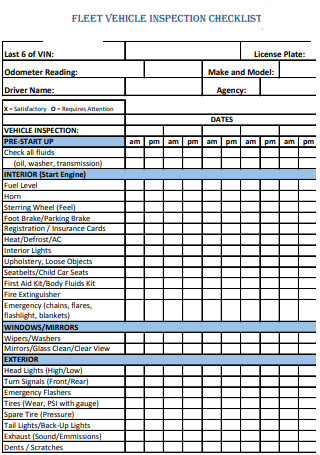
Fleet Vehicle Inspection Checklist
download now -
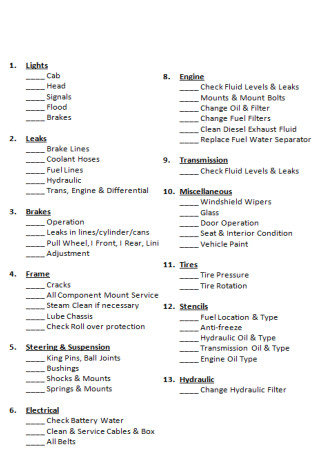
Sample Fleet Vehicle Inspection Checklist
download now -
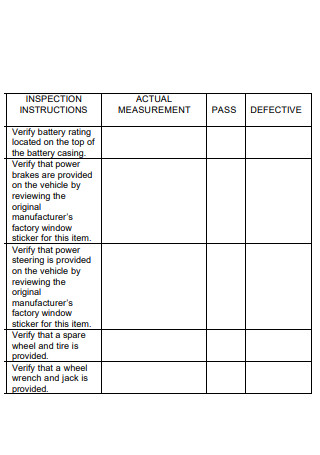
Fleet Vehicle Inspection Checklist Example
download now -
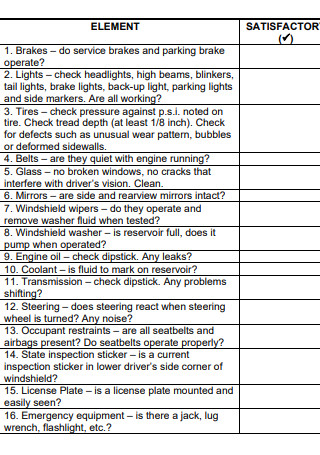
Fleet Vehicle Pre Trip Inspection Checklist
download now -
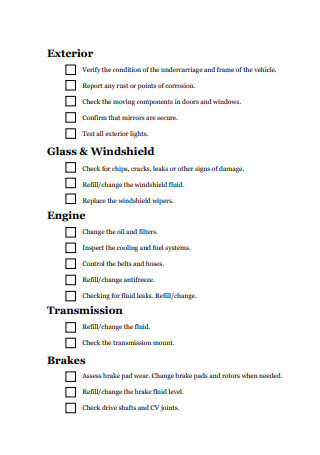
Complete Fleet Vehicle Inspection Checklist
download now -
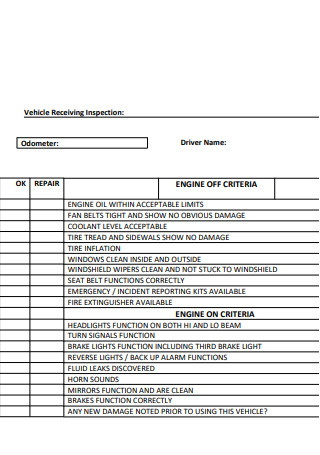
Fleet Vehicle Inspection Checklist Format
download now
FREE Fleet Vehicle Inspection Checklist s to Download
4+ SAMPLE Fleet Vehicle Inspection Checklist
What Is a Fleet Vehicle Inspection Checklist?
Tips to Keep Your Fleet Running Smoothly
Tools Used for Vehicle Inspection
How to Write a Fleet Vehicle Inspection Checklist
FAQs
What do fleet managers want?
What is a key aspect of fleet management?
How many vehicles are in a fleet?
What Is a Fleet Vehicle Inspection Checklist?
A fleet vehicle maintenance checklist is a tool that can assist you in ensuring the safety and roadworthiness of your vehicles. It can also assist you in identifying potential problems so that they can be addressed before they cause further damage. Check that the checklist covers all of the major systems in a vehicle. The vehicle checklist should be simple to follow. It should be well-organized and simple to understand. The distinctive feature of creating a monthly vehicle inspection checklist is that it can be tailored to your specific fleet. This includes considering the types of vehicles you own, the conditions under which they operate, and the average mileage they accumulate.
Tips to Keep Your Fleet Running Smoothly
A well-maintained vehicle uses less fuel, breaks down less frequently, and contributes to lower operating costs. Taking a practical approach also allows you to halt problems before they become safety hazards. As with many things in business, saying it is much easier than doing it. Intentions alone do not always translate into effective action. Human error, haphazard expansion, and ineffective driver training can all have a negative impact on the overall health of your fleet, and when the condition of your vehicles struggles, so does the operations of your company. Viewing the provided fleet vehicle checklist template will help you to see the application of these tips.
Tools Used for Vehicle Inspection
Performing a car inspection every once in a while can go a long way for your fleet. But you can’t just conduct one without the proper tools. This curated list describes the initial items you will need to safeguard the condition of your vehicle. Dedicating the time and effort to inspect each of your vehicles without being passive will reward you in the future.
How to Write a Fleet Vehicle Inspection Checklist
A thorough daily checklist to keep your fleet on the road is an important step toward ensuring your drivers’ safety. Since regulations differ by country, this guide has been compiled containing the necessities you should include in your inspections. Make these fleet vehicle inspection checklist formats a daily habit, and you will be on your way to safety in no time. There are various times when you can and should check on your vehicles, so allocating more time to checking them would make a significant difference. Plus if you already have one, then cross-examine that your fleet vehicle inspection checklist corrections are up to date.
1. Introductory Section
To start off your checklist, you can immediately jump into the action of ticking off boxes. But for professional purposes, you may want to include a cover letter that serves to introduce the objectives of this particular checklist. Indicating this checklist may allow you to review it at the end of the week or even month, which makes it necessary for you to state the date of when you made or use the checklist as well as the person in charge of handling the fleet vehicle inspection checklist.
2. Daily Checklist Section
The next step for you to make is a section for your daily inspection. This section will include both internal and external parts of the vehicle. The internal part will contain checking the mirror positioning, the seat belt condition and function, and the headrest positioning. Whereas the external inspection will involve the condition of vehicle bodywork, windscreen, windows, and lights, condition of windscreen wiper blades, cleanness of windscreen, windows, mirrors, lights, and license plate, security of load, trailer, or roof rack, condition of tires and tire pressure, and the availability of spare wheel and jack.
3. Weekly Checklist Section
This section immediately follows the previous step. Weekly checks include engine oil, coolant, windscreen wash, brake or clutch fluid, power steering fluid, oil or waste leaks, and battery condition. You could also ensure that there is an available vehicle handbook, fire extinguisher, first aid kit and torch, and warning triangle.
4. Monthly Checklist Section
The driver should inspect the vehicle for safety and any necessary repairs. In addition to tasks from the daily or pre-trip Inspection checklist, checks for leaks, wheel alignment, steering and clutch play, and so on should be performed. If minor repairs can be done in-house, employees should be done. These types are not required to be checked every day but can be done monthly.
FAQs
What do fleet managers want?
Fleet managers are expected to reduce costs throughout the fleet or company vehicle, which means identifying and eliminating unnecessary expenses to make the fleet more cost-effective. Fuel, maintenance, and operational expenses can quickly spiral out of control, so keeping track of all expenses is critical. The fleet manager is also the primary point of contact for the vehicle fleet and processes. They are in charge of planning, directing, managing, trying to coordinate, and supervising the programs for fleet vehicle acquisition, allotment, utilization, maintenance, repair, replacement, and disposal.
What is a key aspect of fleet management?
The process of keeping all of your organization’s vehicles in good condition so that they can be used efficiently and safely is known as fleet maintenance. Data analysis is an important aspect of fleet management. You can track and analyze data from your vehicles using software tools or specialized consultants. This analysis can assist you in identifying problems early on and making changes to improve the efficiency of your fleet.
How many vehicles are in a fleet?
The term “fleet,” as it is commonly used, refers to any commercial or public entity that operates 15 or more vehicles or purchases 10 or more vehicles in a single calendar year. This is more than the required number for obtaining fleet insurance, with as few as two vehicles sufficing to secure your spot for fleet insurance. However, the more the merrier. Only a few insurers allow for as few as two, and as with any market, the more providers you limit, the higher the costs.
Keep your fleet vehicles clean and tidy to make maintenance easier. A well-maintained vehicle is easier to inspect and will make it much easier to detect new problems as they arise. Vehicle or fleet owners would know the complications of not having fleet management. As such a scenario would only worsen the condition of the fleet and instead decrease their durability. With that being said, utilizing a fleet vehicle inspection checklist guide would benefit you to maintain the quality of your fleet.
